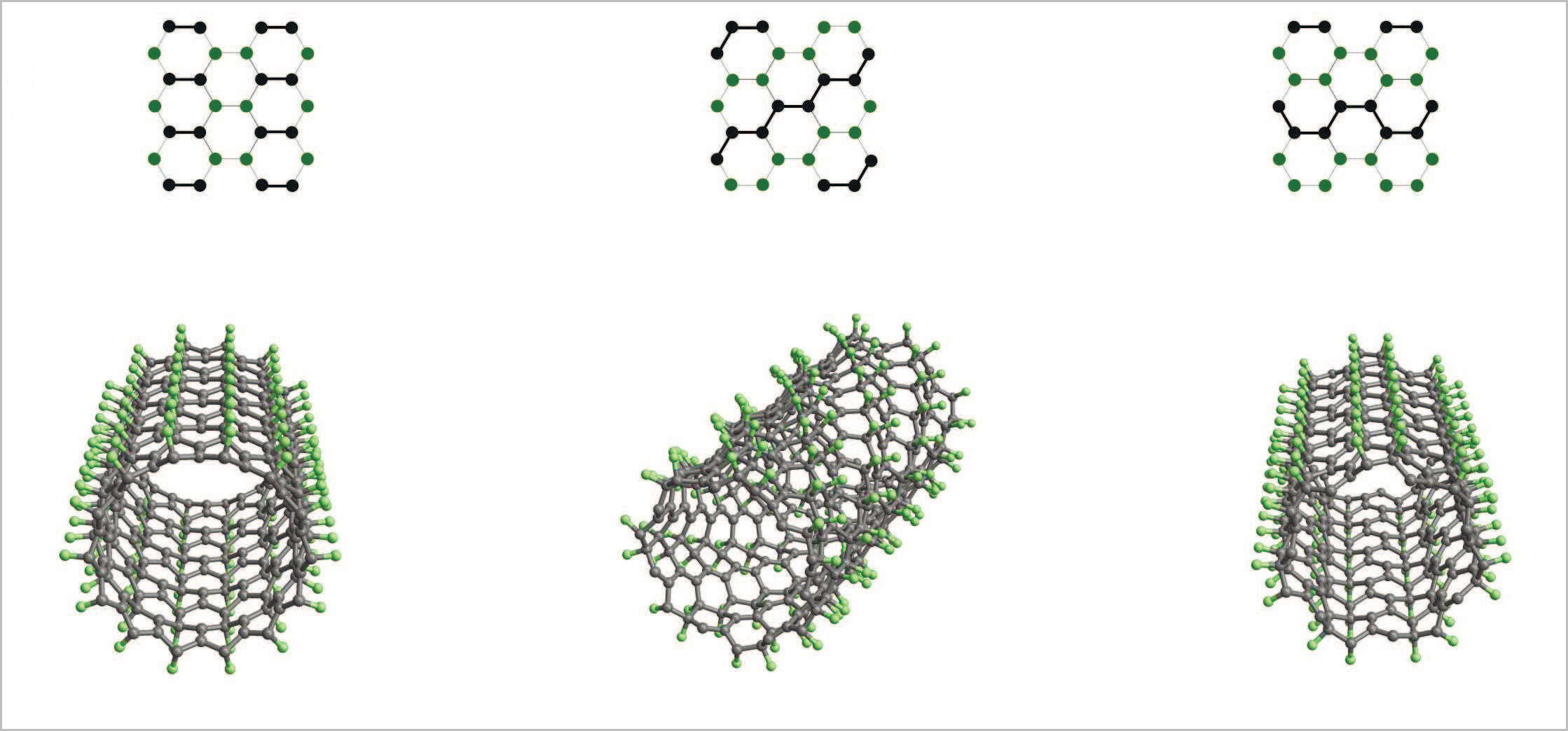Temperature dependence of band gap of completely fluorinated/hydrogenated carbon nanotubes
Publications, 03 April 2024
The Journal of Experimental and Theoretical Physics Letters issued an article by researchers from the Laboratory of Theoretical Physics at JINR “Temperature dependence of the band gap of completely fluorinated/hydrogenated carbon nanotubes: the role of one-dimensional chains”. The authors are Head of the BLTP Sector of Physics of Nanostructures Vsevolod Katkov and Head of the BLTP Department of Condensed Matter Physics Vladimir Osipov.
Carbon nanotubes (CNTs) have a wide range of applications in nanoelectronics, optoelectronics, and some other fields because of their unique properties. Currently, there is much interest in using single-layer CNTs to design infrared sensors and biosensors, integrated circuits, field-effect transistors, memory cells, and solar cells. The presence of the band gap in the electronic spectrum and the possibility of its control (band engineering) play a key role in the designing of such devices. The temperature dependence of the band gap is another important characteristic for various applications in tunnel electronics, optoelectronics, analysis of optical properties (transmission and absorption spectra), luminescence investigation, etc.
 Three versions of the position of impurity atoms, which occur at the maximum (50%) occupancy in nanotubes of line, helical, and chain types
Three versions of the position of impurity atoms, which occur at the maximum (50%) occupancy in nanotubes of line, helical, and chain types
The temperature dependence of the band gap Eg(T) in zigzag single-walled carbon nanotubes at the maximum (50%) fluorination and hydrogenation has been theoretically investigated for three coating versions. Fluorine and hydrogen have been considered as the covalent impurity; these atoms are monovalent and form similar structures. It has been shown that the character of coating dramatically affects the dependence Eg(T), which may vary over a wide range from very weak, typical of pure carbon nanotubes, to strong, typical of bulk semiconductors. The behaviour observed in all cases is typical of bulk semiconductors: the band gap decreases strictly with an increase in the temperature. The character of the temperature behaviour Eg(T) is directly related to the formation of one-dimensional alternating chains in nanotubes. The main factors determining this dependence are the diameter of carbon nanotube, impurity position, and impurity type.